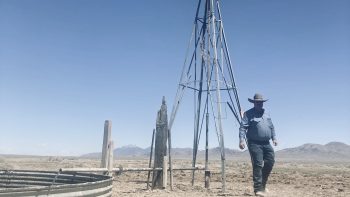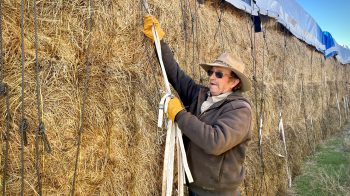Pricing a child’s plea for equine ownership
In third grade, Amanda Ferrara persuaded her parents to let her take horse-riding lessons. She had always loved animals, and her parents, both Bronx born but living in a rural part of Westchester County, N.Y., agreed. Nine years later, her family owns one horse and leases two more.
She says she loves the pursuit and spends six days a week at the barn that boards the horses, taking the bus there after school and staying until dark, often doing homework or eating at the barn. Yet her afternoons are not spent entirely on horseback. For every hour she rides, she spends two to three hours getting her horse ready and cooling him down. “It’s my entire life now,” Amanda, 17, said.
When children express a desire for a pony, obliging parents in urban and suburban areas often vow that they will find a middle-class horse that will not cost more than a car (or a mortgage) payment. It is not easy, though it may not be impossible.
The Ferrara family boards all three horses — Cookie, Teddy and Rubio — at Echo Farm in South Salem, N.Y., which charges $1,300 a month per horse. That includes hay and grain, cleaning the stall and turning the horse out into the field every day.
At least the animals make the expense of boat ownership look reasonable.
Still, despite the cost, parents think the experience is worth it. They typically insist that horses provide deep life lessons in being responsible and caring for something that goes beyond themselves — or how well the animal can jump a fence.
“They’re learning a lot of responsibility at a young age,” said Callie Kuntz-Bauer, owner of Echo Farm. “You have to give up a lot of your social life. You can’t go out and party if you have a 6 a.m. horse show.”
So when children ask for a pony, what are parents to do? They would save a lot of money by steering the child toward another sport. But those parents who want to cultivate their children’s interest need to consider recurring costs that can continue for 30 years or more, long past the time when a child will be riding the horse.
Owners should expect the total spending for the animal’s upkeep to be far greater than the cost to buy it. “The real price is the monthly expenses,” said Carleton Henrich, a mother of four who grew up on 250 acres in southern Virginia.
Henrich recently bought a 5-year-old thoroughbred named Emery. A giant at 17 hands high (5 feet 8 inches at the withers), Emery is for her and her three daughters. (Her son is less interested.)
“He’s a big teddy bear,” she said, giving Emery a peppermint.
Henrich negotiated a two-week trial period to get a sense of the horse’s demeanor. But even during that period she had to have insurance to cover anything that might happen to him. She, like many owners of expensive horses, now has mortality insurance and medical coverage for the animal, which typically costs 3 percent of a horse’s value per year.
Even minor injuries can be costly in time as well as money. Amanda Ferrara said an injury a couple of years ago confined Cookie to his stall for six months. It took six more months for him to get back in shape. But at that point Amanda couldn’t jump with him anymore, so now her family just rides him for recreation.
Leasing a horse generally saves a family only on the upfront cost of buying one. Kuntz-Bauer said that a full lease of a horse is typically one-third of the horse’s value a year. The horses in her barn range in value from $2,500 to $50,000. And people who lease a horse usually take over all the responsibilities and ensuing costs as if they were the owner. A partial lease could spread the costs across multiple owners, but it also reduces riding time.
The list of expenses doesn’t end with room and board. Entry fees for competitions range from $500 for a one-day event to $3,000 to $6,000 for five-day events where the horses have to be transported, boarded and fed, Kuntz-Bauer said. There are also Interscholastic Equestrian Association events where competitors ride the horses at the host barn and don’t need their own horse to compete.
A veterinarian to assess a horse’s initial fitness will cost $1,500 to $2,000. Kuntz-Bauer said annual shots will run about $400. There are costs for dental visits and new shoes, too.
And some costs can rise rapidly.
Rachel Kosmal McCart, a lawyer specializing in horse issues in Portland, Ore., said local hay to feed horses in her area rose from $1 a bale 11 years ago to $5 a bale today. “People who were used to paying very little to feed their horses suddenly couldn’t afford to feed them,” she said.
Incidentals include saddles, bridle and blankets, as well as riding clothes and boots. Used gear is available, too; Georgina Bloomberg, a champion equestrian and daughter of the former New York City mayor, runs the Rider’s Closet to help make the clothes more affordable.
Not all areas are as expensive as Westchester County or other horsy enclaves filled with well-heeled parents and high land costs. Outside Portland, Ore., for example, it would cost $600 a month to board a horse.
In most areas, even wealthy ones, there are also opportunities simply to take lessons or buy time to ride.
Horse clubs can defer costs further and still teach valuable lessons. In New Canaan, Conn., the New Canaan Mounted Troop aims to teach equestrian skills to children ages 7 to 17. The annual cost of $4,350 is not cheap, but it covers one lesson and one barn day per week during the school year.
The group started out as part of the Junior Cavalry of America, a sort of Girl Scouts on horseback, but today it functions like an equine version of Zipcar: Cadets can ride any of its 27 horses, all donated, as long as they have the ability.
But Margot Tucker, the student leader of the troop, said she got the most out of the barn days, when students help care for the horses. “If I could ride every day that would be awesome,” she said. “But what I really like about it is being part of the community. It’s the friendships we have.”
Those are the learning experiences that parents want their children to absorb from horses or any other activity.
This story is part of a collaboration between Marketplace and The New York Times called “A Guide to Buying Just About Anything.”
There’s a lot happening in the world. Through it all, Marketplace is here for you.
You rely on Marketplace to break down the world’s events and tell you how it affects you in a fact-based, approachable way. We rely on your financial support to keep making that possible.
Your donation today powers the independent journalism that you rely on. For just $5/month, you can help sustain Marketplace so we can keep reporting on the things that matter to you.


















